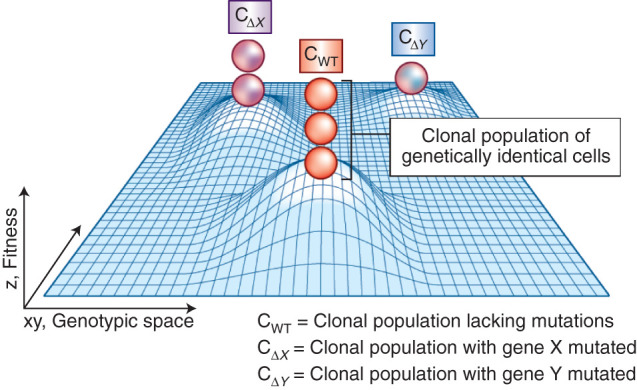Figure 2.

Clonal evolution can be visualized as a fitness landscape, in which individual somatic mutations are minor deviations in genotypic space toward a local fitness optimum. The fitness, or propensity of an individual clone to successfully divide into daughter cells, is depicted here in reduced dimension as a three-dimensional fitness landscape, first described by Sewall Wright in 1931 (113). A mutation causes an individual cell to travel across genotypic space (depicted as the x,y-axes), which can impact fitness (depicted as the z-axis). Certain combinations of mutations may result in greater fitness and subsequent clonal expansion, represented as an upward inflection on the z-axis, that is, a hilltop. An actively adapting population will climb uphill by a sequence of minute genetic changes until a local optimum is achieved. Clonal expansion may occur if evolution slows as these optimums are reached, that is, conditions stabilize. Of note, this convention is the opposite of Waddington's epigenetic landscape, in which more favored states are depicted as valleys rather than hilltops.
